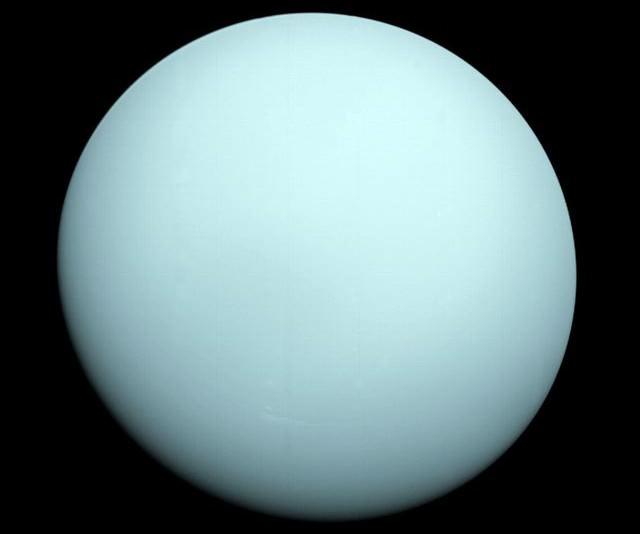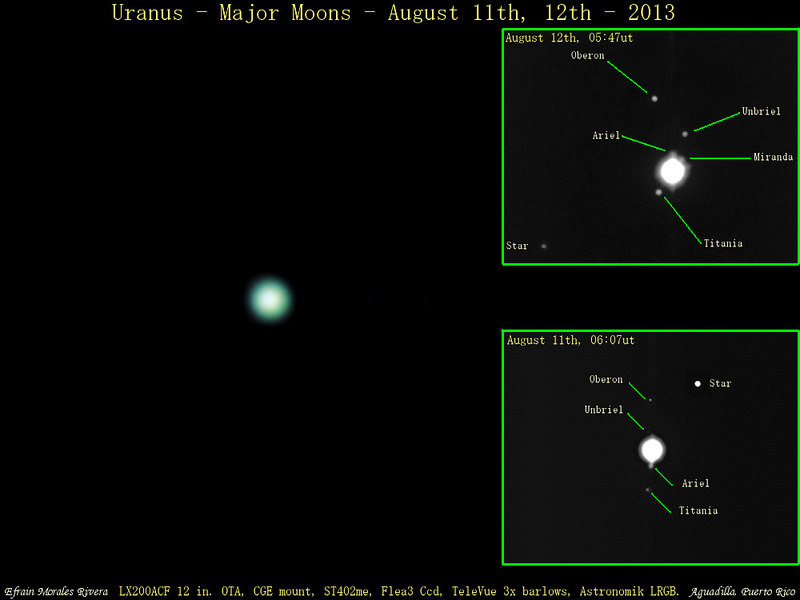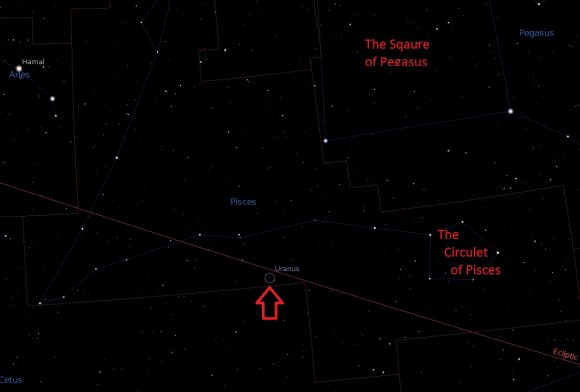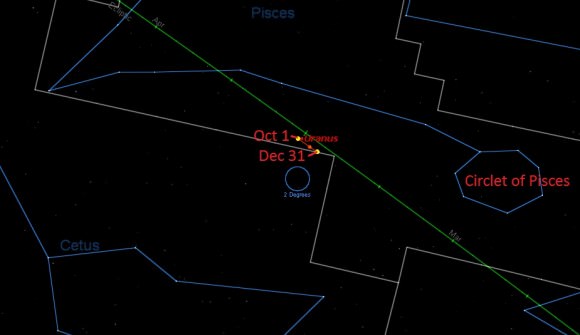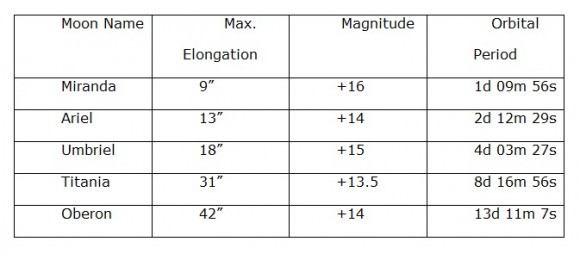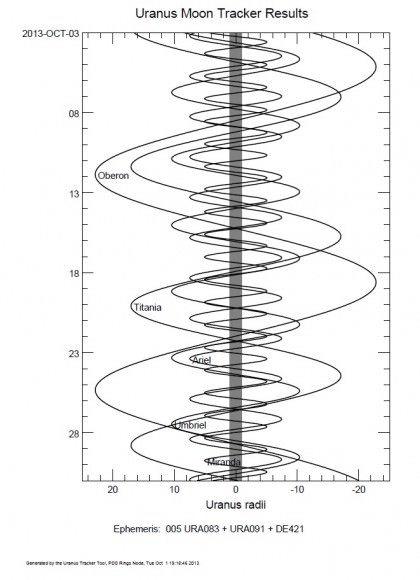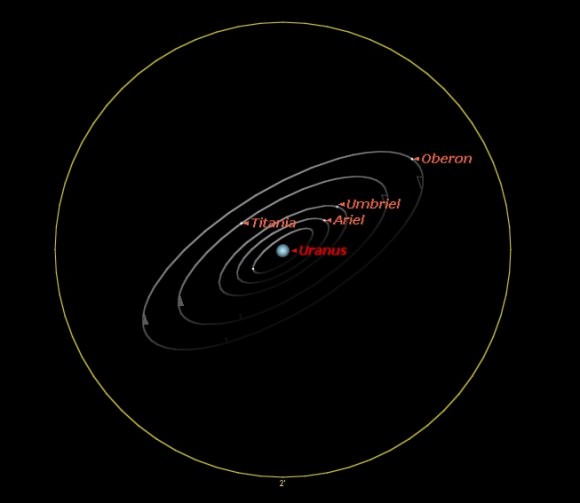It’s no joke… now is the time to begin searching the much-maligned (and mispronounced) planet Uranus as it reaches opposition in early October leading up to a very special celestial event.
Last month, we looked at the challenges of spying the solar system’s outermost ice giant world, Neptune. Currently located in the adjacent constellation Aquarius, Neptune is now 39 degrees from Uranus and widening. The two worlds had a close conjunction of just over one degree of separation in late 1993, and only long time observers of the distant worlds remember a time waaaay back in the early-1970s where the two worlds appeared farther apart than 2014 as seen from our Earthly vantage point.
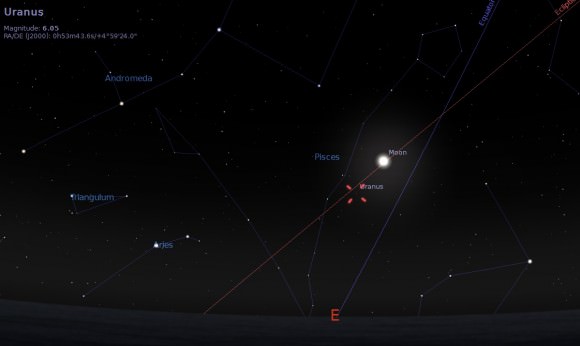
In 2014, opposition occurs at 21:00 Universal Time (UT)/5:00 PM EDT on October 7th. If this date sounds familiar, it’s because Full Moon and the second total lunar eclipse of 2014 and the ongoing lunar tetrad of eclipses occurs less than 24 hours afterwards. This puts Uranus extremely close to the eclipsed Moon, and a remote slice of the high Arctic will actually see the Moon occult (pass in front of) Uranus during totality. Such a coincidence is extremely rare: the last time the Moon occulted a naked eye planet during totality occurred back during Shakespearian times in 1591, when Saturn was covered by the eclipsed Moon. This close conjunction as seen from English soil possibly by the bard himself was mentioned in David Levy’s book and doctoral thesis The Sky in Early Modern English Literature, and a similar event involving Saturn occurs in 2344 AD.
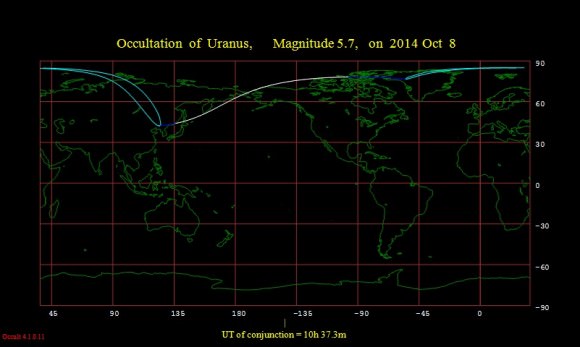
We’re also in a cycle of occultations of Uranus in 2014, as the speedy Moon slides in front of the slow moving world every lunation until December 2015. Oppositions of Uranus — actually pronounced “YOOR-un-us” so as not to rhyme with a bodily orifice — currently occur in the month of September and move forward across our calendar by about 4 days a year.
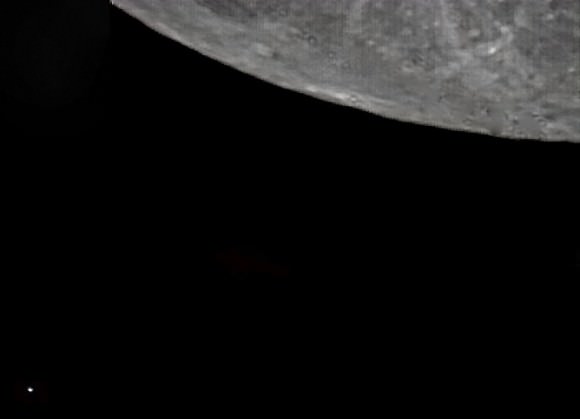
This year sees Uranus in the astronomical constellation Pisces just south of the March equinoctial point. Uranus is moving towards and will pass within a degree of the +5.7 magnitude star 96 Piscium in late October through early November. Shining at magnitude +5.7 through the opposition season, Uranus presents a disk 3.7” in size at the telescope. You can get a positive ID on the planet by patiently sweeping the field of view: Uranus is the tiny blue-green “dot” that, unlike a star, refuses to come into a pinpoint focus.
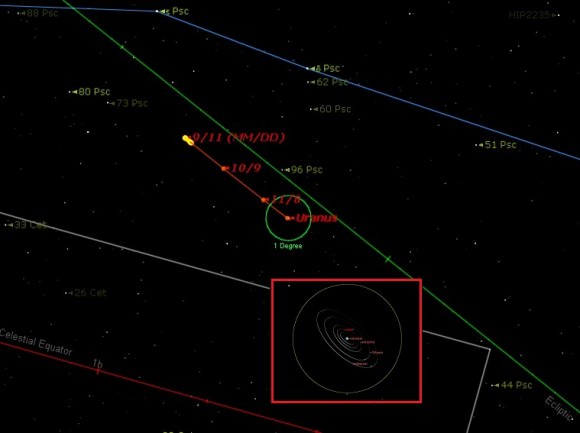
Uranus also presents us with one of the key mysteries of the solar system. Namely, what’s up with its 97.8 degree rotational tilt? Clearly, the world sustained a major blow sometime in the solar system’s early history. In 2014, we’re viewing the world at about a 28 degree tilt and widening. This will continue until we’re looking straight at the south pole of Uranus in early 2030s. Of course, “south” and “north” are pretty arbitrary when you’re knocked back over 90 degrees on your axis! And while we enjoy the September Equinox next week on September 23rd, the last equinox for any would-be “Uranians” occurred on December 16th, 2007. This put the orbit of its moons edge-on from our point of view from 2006-2009 for only the third time since discovery of the planet in 1781. This won’t occur again until around 2049. Uranus also passed aphelion in 2009, which means it’s still at the farther end of its 19.1 to 17.3 astronomical unit (A.U.) range from the Sun in its 84 year orbit.
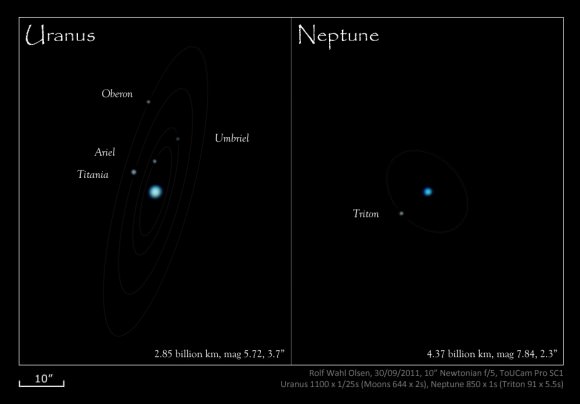
And as often as Uranus ends up as the butt (bad pun) of many a scatological punch line, we can at least be glad that the world didn’t get named Georgium Sidus (Latin for “George’s Star”) after William Herschel’s benefactor, King George the III. Yes, this was a serious proposal (!). Herschel initially thought he’d found a comet upon spying Uranus, until he realized its slow motion implied a large object orbiting far out in the solar system.
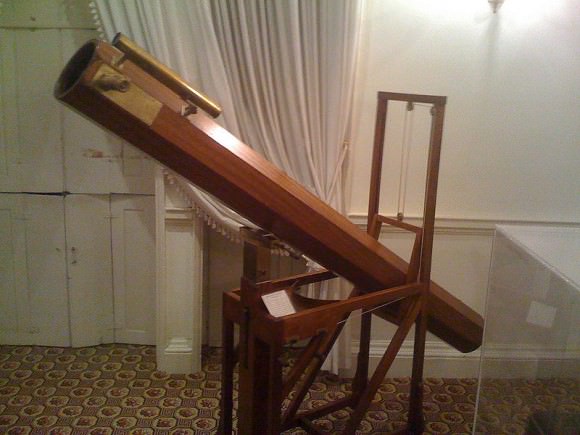
Spurious sightings of Uranus actually crop up on star maps prior to Herschel’s time, and in theory, it hovers juuusst above naked eye visibility near opposition as seen from a dark sky site… can you pick out Uranus without optical assistance during totality next month? Hershel and Lassell also made claims of spotting early ring systems around both Uranus and Neptune, though the true discovery of a tenuous ring system of Uranus was made by the Kuiper Airborne Observatory (a forerunner of SOFIA) during an occultation of a background star in 1977.
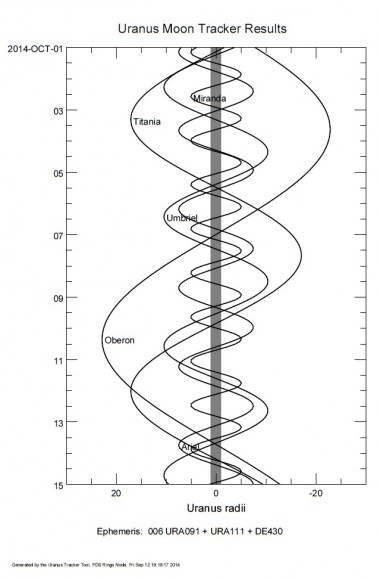
Looking for something more? Owners of large light buckets can capture and even image (see above) 5 of the 27 known moons of Uranus. We charted the orbital elongations for favorable apparitions through October 2014 (to the left). Check out last year’s chart for magnitudes, periods, and maximum separations for each respective moon. An occulting bar eyepiece may help you in your quest to cut down the ‘glare’ of nearby Uranus.
When will we return to Uranus? Thus far, humanity has explored the world up close exactly once, when Voyager 2 passed by in 1986. A possible “Uranus Probe” (perhaps, Uranus Orbiter is a better term) similar to Cassini has been an on- and off- proposal over the years, though it’d be a tough sell in the current era of ever dwindling budgets. Plutonium, a mandatory power source for deep space missions, is also in short supply. Such a mission might take up to a decade to enter orbit around Uranus, and would represent the farthest orbital reconnaissance of a world in our solar system. Speedy New Horizons is just whizzing by Pluto next July.
All great thoughts to ponder as you scour the skies for Uranus in the coming weeks!

